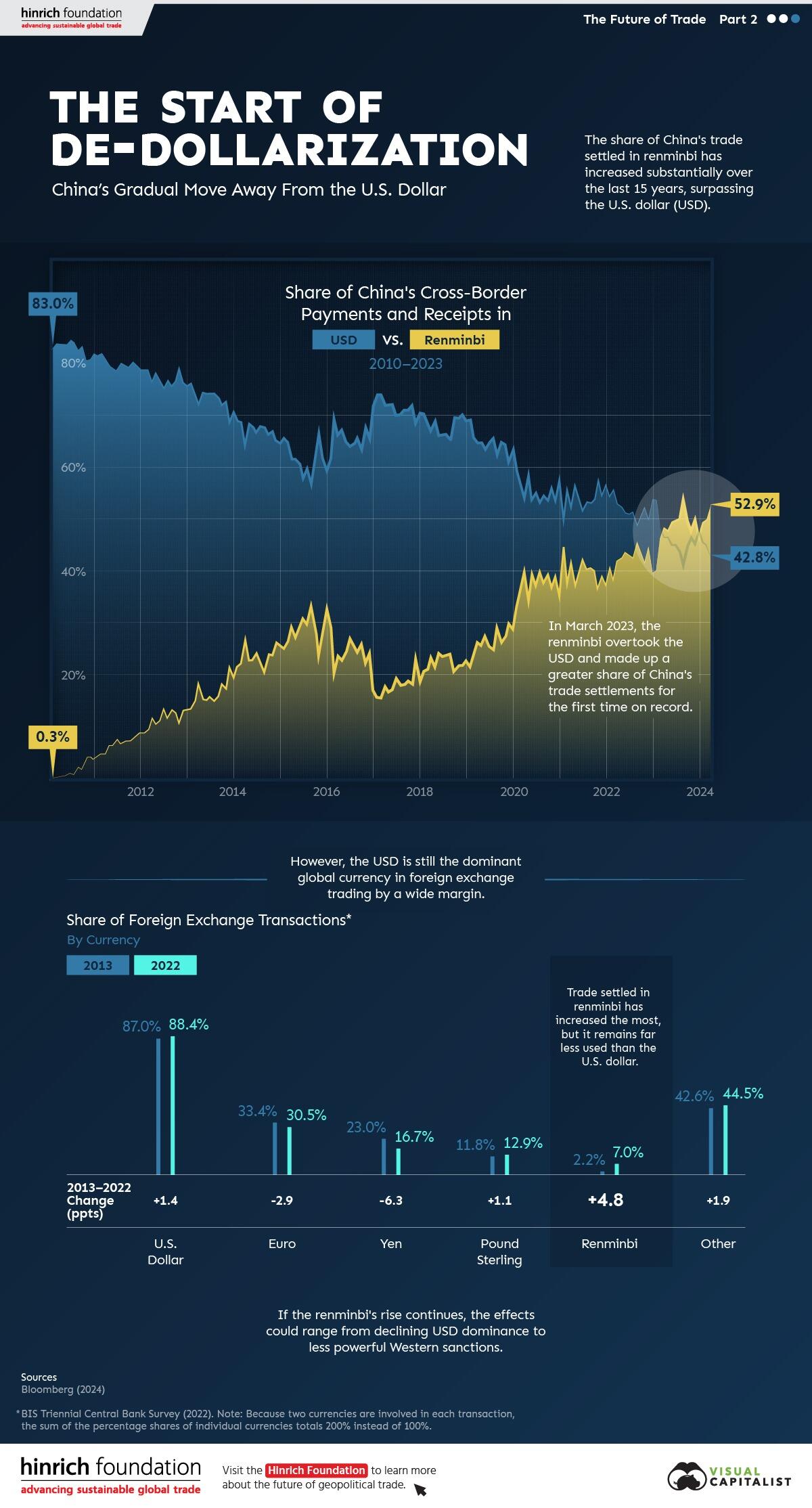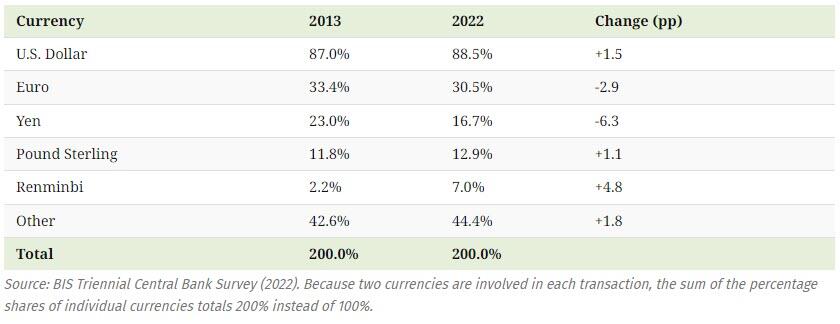Since 2010, the majority of China’s cross-border payments, like those of many countries, had been settled in U.S. dollars (USD). As of the first quarter of 2023, that’s no longer the case.
As Visual Capitalist's Julian Wendling shows in the graphic below, from the Hinrich Foundation, the Chinese renminbi (RMB) is growing in popularity in payments both domestically and globally.
The De-Dollarization of China’s Cross-Border Transactions
This analysis uses Bloomberg data on the share of China’s payments and receipts in RMB, USD, and other currencies from 2010 to 2024.
In the first few months of 2010, settlements in local currency accounted for less than 1.0% of China’s cross-border payments, compared to approximately 83.0% in USD.
China has since closed that gap. In March 2023, the share of the RMB in China’s settlements surpassed the USD for the first time.
Since then, the de-dollarization in Chinese international settlements has continued.
As of March 2024, over half (52.9%) of Chinese payments were settled in RMB while 42.8% were settled in USD. This is double the share from five years previous. According to Goldman Sachs, foreigners’ increased willingness to trade assets denominated in RMB significantly contributed to de-dollarization in favor of China’s currency. Also, early last year, Brazil and Argentina announced that they would begin allowing trade settlements in RMB.
Most Popular Currencies in Foreign Exchange (FX) Transactions
Globally, analysis from the Bank for International Settlements reveals that, in 2022, the USD remained the most-used currency for FX settlements. The euro and the Japanese yen came in second and third, respectively.
The Chinese renminbi, though accounting for a relatively small share of FX transactions, gained the most ground over the last decade. Meanwhile, the euro and the yen saw decreases in use.
The Future of De-Dollarization
If the RMB’s global rise continues, the stranglehold of the USD on international trade could diminish over time.
The impacts of declining dollar dominance are complex and uncertain, but they could range from the underperformance of U.S. financial assets to diminished power of Western sanctions.
However, though the prevalence of RMB in international payments could rise, a complete de-dollarization of the world economy in the near- or medium-term is unlikely. China’s strict capital controls that limit the availability of RMB outside the country, and the nation’s sputtering economic growth, are key reasons contributing to this.
By Zerohedge.com
More Top Reads From Oilprice.com:
- Why Kinder Morgan is Targeting This Texas Oil Field
- EIA Confirms Small Crude Inventory Build, Gasoline Draw
- Gasoline Prices Ahead of Memorial Day Are 1% Higher Than a Year Ago






















President Putin started the de-dollarization ball rolling when he decided in 2014 to de-dollarize the Russian economy after the United States imposed sanctions on Russia in the aftermath of the annexation of the Crimea. Since then 90% of trade between Russia and China which hit $240 bn in 2023 was conducted by their own national currencies.
Meanwhile, Chinese renminbi (RMB) has been growing in popularity in payments both domestically and globally. It overtook the dollar in China's cross-border payments and receipts in 2023. As of March 2024, over half (52.9%) of Chinese payments were settled in RMB while 42.8% were settled in USD.
Moreover, the petro-yuan is also gaining fast against the petrodollar in global oil trade with the petrodollar losing more than 20% of its share from 80% to 60% in the last 4 years.
By 2030 the yuan is projected to be the main reserve currency in the world with the petro-yuan emerging as the primary oil currency.
Dr Mamdouh G Salameh
International Oil Economist
Global Energy Expert